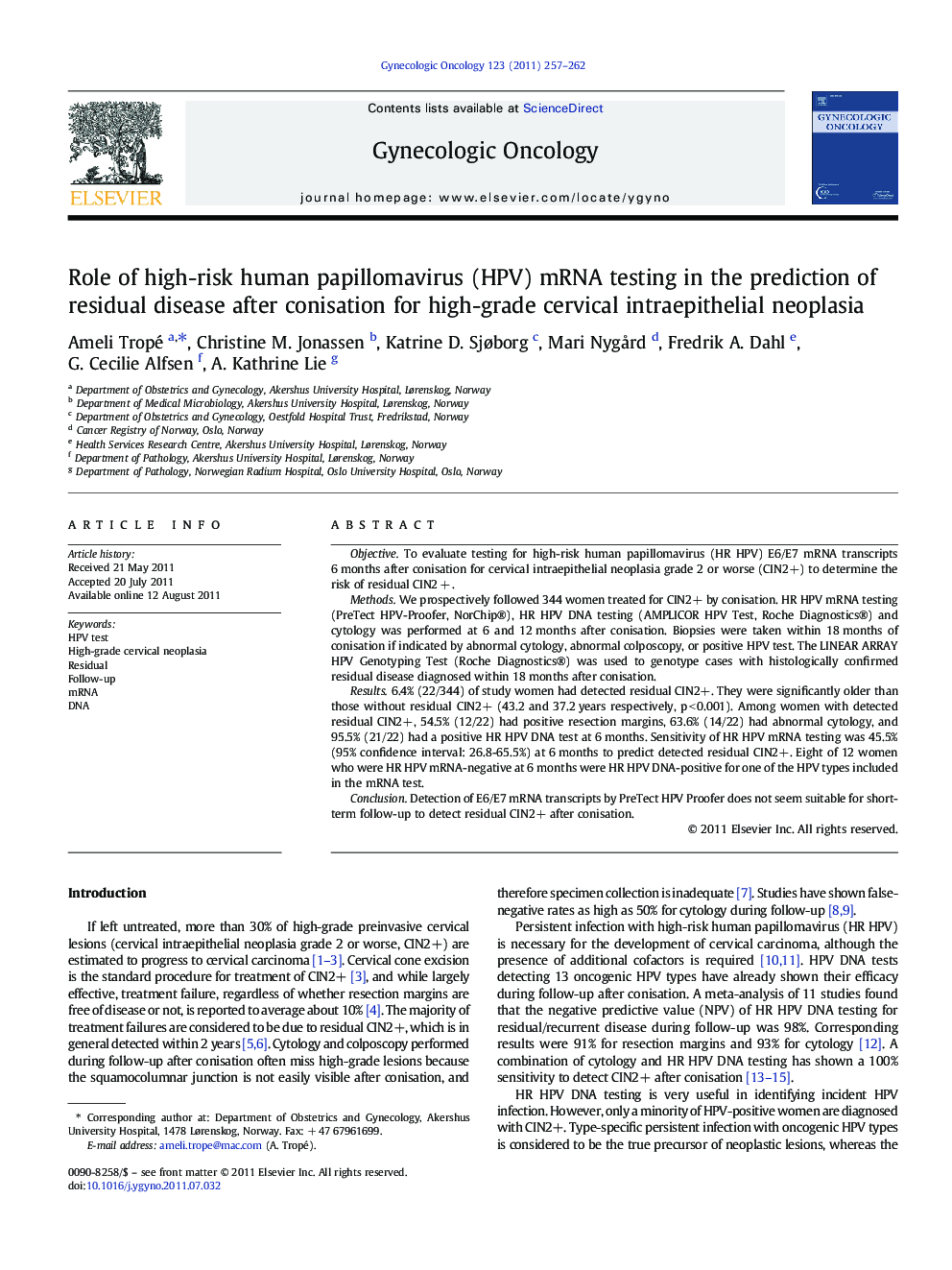| Article ID | Journal | Published Year | Pages | File Type |
|---|---|---|---|---|
| 3945432 | Gynecologic Oncology | 2011 | 6 Pages |
ObjectiveTo evaluate testing for high-risk human papillomavirus (HR HPV) E6/E7 mRNA transcripts 6 months after conisation for cervical intraepithelial neoplasia grade 2 or worse (CIN2+) to determine the risk of residual CIN2 + .MethodsWe prospectively followed 344 women treated for CIN2+ by conisation. HR HPV mRNA testing (PreTect HPV-Proofer, NorChip®), HR HPV DNA testing (AMPLICOR HPV Test, Roche Diagnostics®) and cytology was performed at 6 and 12 months after conisation. Biopsies were taken within 18 months of conisation if indicated by abnormal cytology, abnormal colposcopy, or positive HPV test. The LINEAR ARRAY HPV Genotyping Test (Roche Diagnostics®) was used to genotype cases with histologically confirmed residual disease diagnosed within 18 months after conisation.Results6.4% (22/344) of study women had detected residual CIN2+. They were significantly older than those without residual CIN2+ (43.2 and 37.2 years respectively, p < 0.001). Among women with detected residual CIN2+, 54.5% (12/22) had positive resection margins, 63.6% (14/22) had abnormal cytology, and 95.5% (21/22) had a positive HR HPV DNA test at 6 months. Sensitivity of HR HPV mRNA testing was 45.5% (95% confidence interval: 26.8-65.5%) at 6 months to predict detected residual CIN2+. Eight of 12 women who were HR HPV mRNA-negative at 6 months were HR HPV DNA-positive for one of the HPV types included in the mRNA test.ConclusionDetection of E6/E7 mRNA transcripts by PreTect HPV Proofer does not seem suitable for short-term follow-up to detect residual CIN2+ after conisation.
►45.5% sensitivity for mRNA test 6 months after conisation to detect residual CIN2+. ►54.5% of women detected with residual CIN2+ had positive resection margins.
